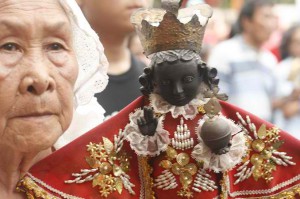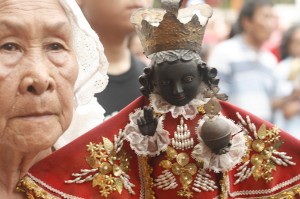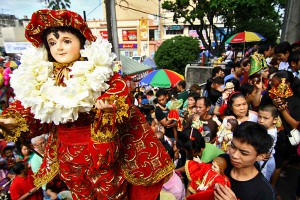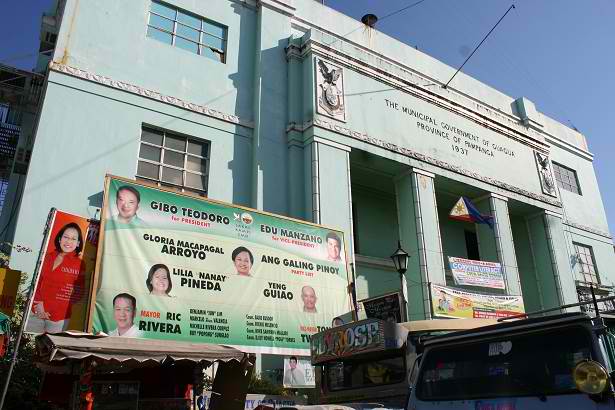By PATRICK KING PASCUAL
AMID chants of Viva Pit Senyor! (or Long live the Christ child!), about a hundred thousand devotees of the Holy Child joined Saturday’s grand foot procession in Cebu City— the eve of the Feast of the Sto. Niño.
In the island province of Cebu in southern Philippines, the most celebrated feast and patron is the Sto. Niño, an icon in the Roman Catholic faith symbolizing the child Jesus Christ. Devotees pray to him for different petitions, and to give thanks for all the blessings they have received.
Although the Sto. Niño is not the official patron saint of Cebu, the Cebuanos still continue to celebrate the feast of the child patron with much gusto. (Cardinal Vidal, Archbishop of Cebu, declared Our Lady of Guadalupe as the principal patroness of Cebu in 2002.)
The Sto. Niño statue in Cebu is believed to be the oldest religious image in the Philippines, donated by Ferdinand Magellan to Rajah Humabon in 1521. The statue is said to be miraculous because it survived a great fire in 1565.
On the third Saturday of January each year, people gather at the Basilica del Sto. Niño Cebu — the oldest Roman Catholic church in the country, to attend the novena in honor of the child Jesus, and the grand foot procession that follows.
The grand procession is the most awaited by the Cebuanos and Catholic devotees, next to the Sinulog Festival, which pays tribute to the Cebuano’s acceptance of Roman Catholicism and also held to honor the Sto. Niño.
According to the organizing committee, this year’s procession passed a longer 6.8-kilometer route. The change was intended to give many people the opportunity to feel what it was like for the Sto. Nino procession to pass by their homes.
Devotees paraded along the main streets of Cebu, carrying their own Sto. Niño statues. Those without statues simply swayed their raised hands from left to right while the band played tunes that gave praise to the Holy infant.
Spectators eagerly flashed their cameras as they lined the sidewalks of Cebu’s main streets, secured by ropes and guarded by volunteers and ROTC students.
The procession started around one in the afternoon and ended at past seven in the evening.
Manang Ella, who has been a Sto. Niño devotee since her husband passed away, said that this yearly procession is the Cebuano’s way of showing the most miraculous patron their appreciation and gratitude for the countless blessings He has given them.
For her, the sacrifice of walking from the Basilica up to the city center and then back to the church, is also her way of making up for the weekends and months she had failed to attend mass.
Manang Ella always brings her old black Sto. Niño to the yearly procession. Even if the gold-plated crown and accessories of the statue are already tarnished, she refuses to buy a new one because she had that statue in her possession for so many years, and it has given her countless blessings.
For many of the Cebuanos, it doesn’t matter how their Sto. Niños look like. Some of them only have the small ones usually seen near the wind shields of taxis and jeepneys.
They are thankful for the blessings they have received because of their faith and devotion to the Christ child.



